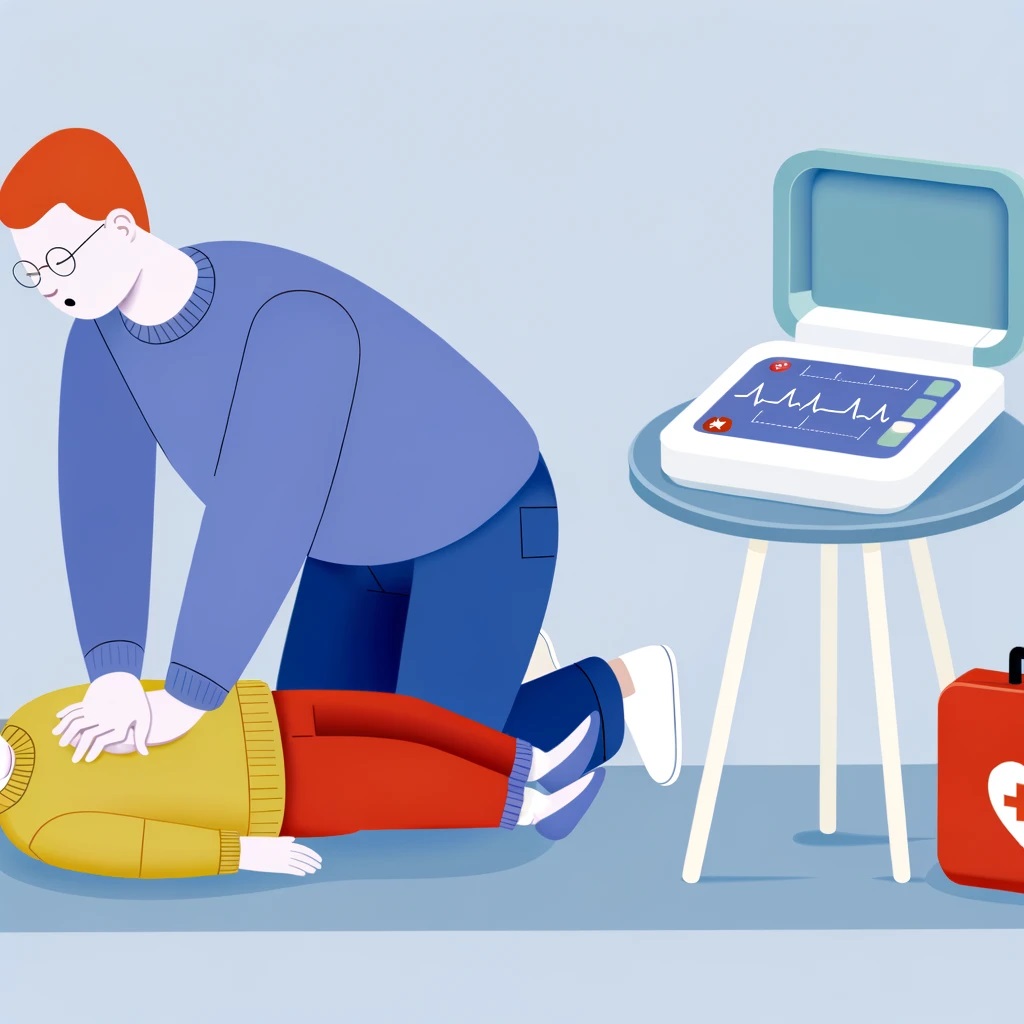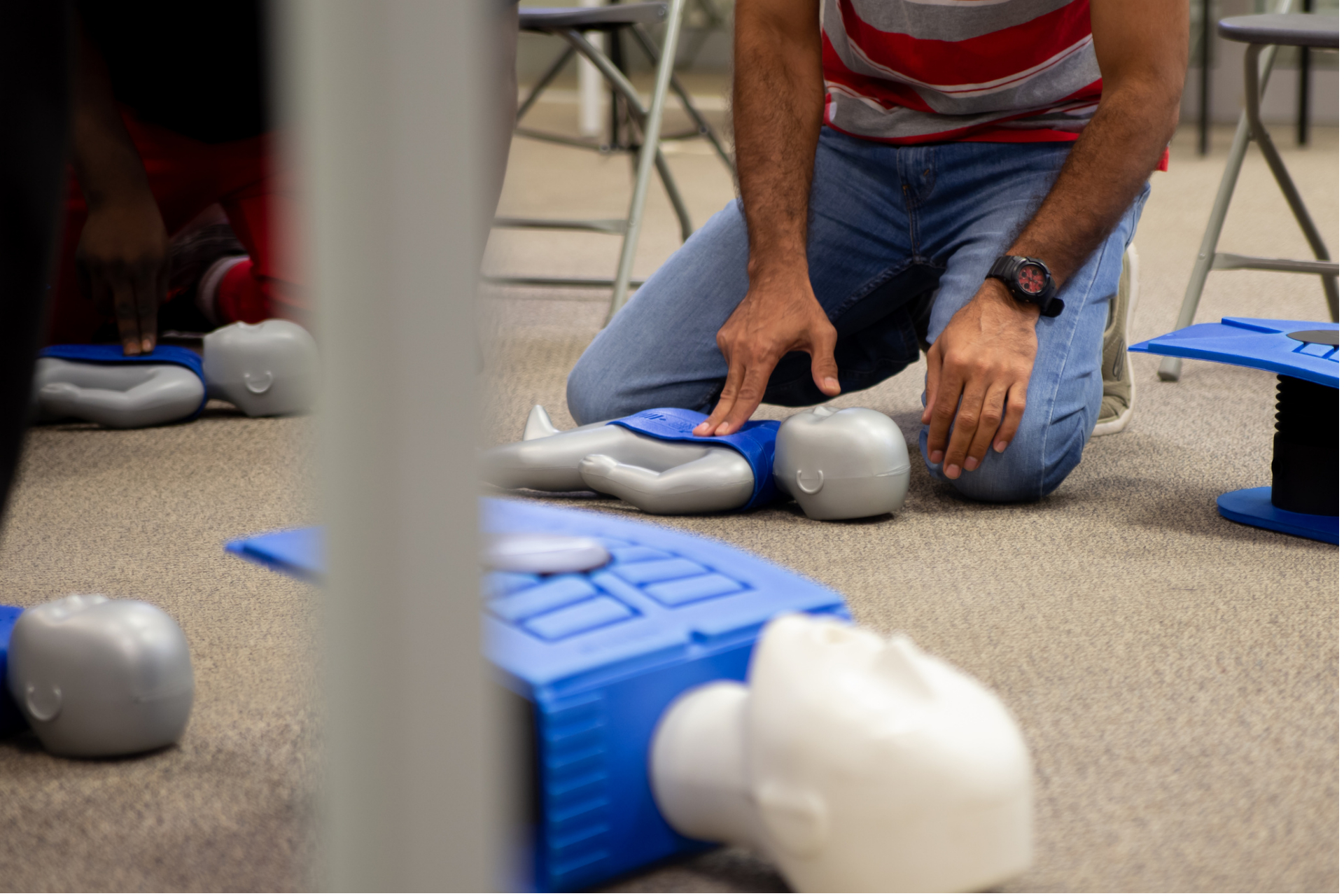Pediatric AED Pad Placement in Children and Infants
In our journey at GotAED, we’ve embarked on a mission fueled by a profound commitment to safeguarding the hearts of our youngest and most vulnerable. Every day, we’re reminded of the staggering reality: 350,000 people succumb to cardiac arrest annually in the United States alone. Among these, the most heartbreaking cases involve our children, whose lives and futures hinge on the immediate availability of life-saving equipment like Automated External Defibrillators (AEDs).
Our platform, dedicated to placing AEDs where kids learn and play, is more than just a crowdfunding site; it’s a testament to the power of community action. Whether you’re a school, a youth-focused organization, or a compassionate individual, GotAED empowers you to be a vital part of this life-saving narrative.
In this comprehensive guide, we delve into the critical importance of proper pediatric AED pad placement for children and infants. This information is not just a collection of guidelines; it’s a resource that could mean the difference between life and death in those crucial moments following a pediatric sudden cardiac arrest. By empowering ourselves with knowledge and the right tools, we can turn a moment of crisis into a story of survival and hope.
Understanding Pediatric Sudden Cardiac Arrest
Statistics and Prevalence of Pediatric SCA
Pediatric Sudden Cardiac Arrest (SCA) presents a significant health concern. In the United States, the incidence of EMS-assessed Out-of-Hospital Cardiac Arrest (OHCA) in children was reported as 7,037 cases in 2015. This statistic underscores the need for preparedness in emergency cardiac care for children, especially considering that the majority of these cases occur at home (87.5%).
Key Differences Between Pediatric and Adult Cardiac Emergencies
Understanding the differences between pediatric and adult cardiac emergencies is crucial for effective response and treatment. In pediatric cases, the mortality rates for out-of-hospital cardiac arrest are about 90%, and for in-hospital cardiac arrests, approximately 65%.
These high mortality rates are partly due to the differences in resuscitation protocols between children and adults. For instance, pediatric resuscitation protocols vary depending on the child’s age and size, with distinct guidelines for infants (less than 1 year of age) and older children (up to 55 kg or showing signs of puberty).
The Critical Role of AEDs in Pediatric SCA Survival
The use of Automated External Defibrillators (AEDs) is integral in improving survival rates in pediatric SCA cases. While the general guidelines for defibrillation in pediatric cardiac arrest are similar to adults, the energy dose and equipment used differ.
For children, the recommended initial energy dose for defibrillation is 2 joules/kg, increasing to 4 joules/kg for subsequent attempts. The maximum dose is 10 joules/kg or the adult maximum dose, depending on the defibrillator type. AEDs with pediatric cables are preferred for children up to 8 years of age, but adult cables may also be used if necessary.

The Importance of CPR in Conjunction with AED Use
The American Heart Association’s 2020 guidelines underscore the paramount importance of high-quality CPR in pediatric resuscitation. For infants and children, this means chest compressions of adequate rate and depth, full chest recoil, minimal interruptions, and avoiding excessive ventilation. The compression depth for infants is about 4 cm, and for children, it’s around 5 cm. The optimal rate of compressions is 100-120 per minute.

Coordinating CPR with AED Analysis and Shocks
In pediatric cardiac emergencies, the use of AEDs is vital. When using an AED on a child, it’s important to follow specific steps for safe and effective use. These include turning on the AED, exposing the child’s chest, attaching the electrode pads, allowing the AED to analyze the heart rhythm, and delivering a shock if necessary. After the shock, CPR should be resumed, starting with chest compressions followed by rescue breaths.
Depth and Rate of Chest Compressions in Pediatric Cases
For infants, chest compressions can be performed using the two-finger technique or the two-thumb encircling hands technique. The chest should be compressed at least one-third of its anterior-posterior diameter. For children, chest compressions should be over the lower half of the sternum either with the heel of one hand or with two hands.
Maintaining a Rhythm Until Professional Help Arrives
Once the AED has analyzed the heart rhythm and a shock has been delivered (if needed), it’s crucial to reassess the child and continue CPR if necessary. This process involves checking for signs of life and starting with chest compressions followed by rescue breaths. If no signs of life are evident after two minutes, another shock may be necessary.
Pediatric AED Pad Placement: Step-by-Step Guide
Infant (0-1 year old) pad placement
- Clearing the chest: When preparing an infant for AED use during a cardiac arrest, ensure the chest is clear of clothing or obstructions. It’s crucial to remember that infants are not miniature adults, and their AED pads must be placed differently than adult pads.
- Proper pad positioning: For infants, the anterior-posterior pad placement is necessary. One pad should be placed on the infant’s upper left chest, and the other on the back, exactly between the shoulder blades. This placement is critical for effective shock therapy due to the smaller size of an infant’s heart and different placement requirements compared to adults.
- Securing the pads: Ensure that the pads are securely placed and fully touching the skin. Avoid starting CPR or applying chest compressions before the pads are correctly positioned. Proper pad placement is crucial for the AED to effectively analyze the heart rhythm and deliver a shock if necessary.
Child (1-10 years old) pad placement
- Chest preparation: Before attaching the child pads, remove any clothing, jewelry, and medication patches from the child’s chest to ensure no interference with the pads and full contact with the skin. Wiping the chest dry if wet is also important.
- Pad placement for children: Pediatric pads are recommended for children below 8 years of age. Place the pads in the anterior-posterior position – one on the front of the chest and the other on the child’s back, avoiding any direct contact between the two if adult pads are being used in the absence of pediatric pads.
- Ensuring good pad-to-skin contact: It’s vital to ensure that the pads make full contact with the child’s skin for the AED to work effectively. Check the placement and adjust if necessary to ensure good contact and adherence to the skin.
Adolescent (10-18 years old) pad placement
- Understanding chest landmarks: For adolescents, similar to adults, the placement of AED pads should be over the lower half of the sternum. However, for those under 55 kg, special care should be taken to adjust the position and pressure accordingly.
- Pad placement for adolescents: Use universal pads if available, which can serve all patients regardless of size or age. This simplifies the process, saves time, and increases the efficiency of the defibrillation process.
- Optimizing pad adherence: Ensure that the pads are securely adhered to the skin with no gaps or loose ends. This is crucial for the AED to deliver the shock effectively and analyze the heart rhythm accurately.
AED Fundraising and Support through “Got AED”
Introduction to the “GotAED” Platform
GotAED, a pioneering crowdfunding platform, creates a bridge between those in need of life-saving AED devices and generous individuals willing to contribute to this noble cause. The platform empowers schools, youth groups, and various organizations to acquire AEDs, which are crucial for handling sudden cardiac arrests (SCA) in children and adolescents. It operates on a simple yet powerful principle: connecting people who care about children’s safety with the resources to make a difference.
Success Stories of AED Funding through Crowdfunding
The impact of Got AED’s efforts is evident in its success stories. The platform has enabled various institutions to secure AEDs, thereby safeguarding numerous young lives. For instance, the Starfinder Foundation, which lacked an AED for its athletic facility, successfully obtained one through GotAED, ensuring the safety of youth soccer players.
Similarly, Legacy Youth Tennis and Education and the Program for Injury Prevention in Youth Sports at Vanderbilt University Medical Center have benefitted from the platform, reflecting its significant role in enhancing cardiac safety in youth sports environments.
Encouraging Readers to Support the Cause
We at GotAED urge our readers to join this vital cause. By supporting campaigns on our platform, you contribute to equipping schools and youth organizations with AEDs, a critical step in combating pediatric SCA.

